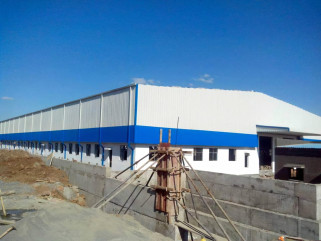Sustainability in Focus: Composite Construction for Eco-Friendly Pre-Engineered Sheds
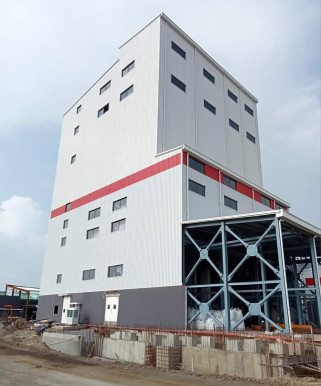
Sustainable composite construction is revolutionizing how we design and build eco-friendly PEB sheds. As the industrial and commercial sectors pivot toward environmental responsibility, green pre-engineered buildings are no longer just a trend—they are the future.
At the intersection of cost-efficiency and climate consciousness lies composite construction sustainability—offering a pathway to low carbon footprint building materials, energy-efficient industrial sheds, and green construction methods for warehouses.
In this article, we explore how composite construction is driving eco-friendly innovation in PEB (Pre-Engineered Building) design and how businesses can benefit from sustainable choices.
What is Sustainable Composite Construction?
Sustainable composite construction refers to the use of engineered materials made from two or more constituent components that deliver superior strength, insulation, and environmental benefits. These materials, often involving combinations like:
- Metal + Polyurethane Foam (PUF)
- Metal + Mineral Wool
- Recycled polymers + natural fibers
are used in structural elements and panels that reduce overall resource consumption while enhancing durability.
When implemented in pre-engineered sheds, these composites:
- Reduce the building’s carbon footprint
- Improve energy efficiency
- Minimize construction waste
- Enhance structural longevity
Why Eco-Friendly PEB Sheds Are the Future?
With rising energy costs and stricter environmental regulations, more industries are investing in eco-friendly PEB sheds. These buildings, when combined with composite construction, offer significant environmental and financial benefits.
Here’s how:
1. Reduced Environmental Impact
PEB structures are factory-fabricated, which leads to:
- Minimal on-site waste
- Efficient material usage
- Reduced construction time and emissions
Add sustainable roofing for PEB sheds (like insulated composite panels), and your project is both greener and cleaner.
2. Energy-Efficient Industrial Sheds
Composite walls and roofing panels help in maintaining indoor temperatures, drastically reducing reliance on artificial heating or cooling systems. The result?
- Lower electricity bills
- Reduced greenhouse gas emissions
- Enhanced workplace comfort
3. Use of Recyclable and Reusable Materials
PEB structures often use materials that can be:
- Recycled after deconstruction
- Reused in other builds
- Designed for easy disassembly
This approach is central to green construction methods for warehouses and industrial spaces.
Key Features of Composite Construction Sustainability
| Feature | Impact on Sustainability |
| Lightweight panels | Reduced transportation fuel and CO₂ |
| Built-in insulation | Energy savings over lifecycle |
| Modular fabrication | Less material wastage |
| Long lifespan | Fewer repairs and replacements |
| Non-toxic materials | Healthier indoor environments |
Benefits of Using Composite Materials in PEB Sheds
1. Thermal Efficiency
Composite panels (PUF or mineral wool-based) provide superior insulation, reducing HVAC usage in extreme weather zones.
2. Water & Fire Resistance
These materials are water-tight and fire-rated, making them safe for industries like pharmaceuticals, logistics, cold storage, and manufacturing.
3. Faster Installation
Their modular design means reduced construction time, resulting in less on-site pollution and quicker ROI.
4. Aesthetic & Design Flexibility
Composite panels come in a range of finishes and colors that meet both aesthetic and environmental goals—perfect for modern green warehouses and office-cum-industrial setups.
Low Carbon Footprint Building Materials in PEB
Materials used in composite construction help meet sustainability targets. Examples include:
- Recycled steel for PEB frames
- PUF or EPS insulated panels for roofing and walls
- Solar-reflective coatings on composite panels
- Cool roofing membranes that reflect sunlight and lower heat absorption
These innovations not only support sustainable composite construction but also reduce long-term operating costs.
Metrosh's Commitment to Green Construction
At Metrosh, we design and deliver green pre-engineered buildings using the latest sustainable roofing and wall panel solutions. Our team helps clients:
- Choose the right composiPEB sheds are fabricated off-site with precision, resulting in less material waste, faster construction, and reduced emissions. When paired with composite panels, they become even more eco-friendly due to better energy performance and material efficiency.and environmental compliance
- Implement low-emission construction techniques
- Achieve LEED/GREEN certification readiness
Conclusion
Composite construction in PEB sheds offers more than just structural benefits—it’s a gateway to eco-friendly, low-maintenance, and energy-efficient building solutions. From sustainable roofing for PEB sheds to thermal insulation and fire safety, these materials enable businesses to build responsibly without sacrificing performance or aesthetics.
If you're planning a new industrial shed, warehouse, or logistics hub, consider a green pre-engineered building with composite components. You’ll not only save on long-term operational costs but also contribute positively to the environment.
Popular Searches
Pre-Engineered Buildings | Civil Construction | Hybrid Constructions | Best Construction Company
FAQs
1. What makes composite construction sustainable in PEB sheds?
Composite construction uses energy-efficient, lightweight materials that reduce the environmental impact of building. These materials offer thermal insulation, recyclability, and durability—leading to long-term sustainability in PEB structures.
2. How are pre-engineered sheds eco-friendly compared to traditional buildings?
PEB sheds are fabricated off-site with precision, resulting in less material waste, faster construction, and reduced emissions. When paired with composite panels, they become even more eco-friendly due to better energy performance and material efficiency.
3. What types of composite materials are used in sustainable PEB construction?
Common materials include:
- PUF (Polyurethane Foam) insulated panels
- EPS (Expanded Polystyrene) panels
- Mineral wool panels
- Recycled metal facings with insulation cores
These materials provide insulation, fire resistance, and weather protection.
4. Can composite PEB sheds be designed for energy efficiency?
Yes, absolutely. Composite panels offer built-in thermal resistance, minimizing heat transfer. When combined with solar panels, ventilated roofs, and reflective coatings, PEB sheds can be designed for excellent energy efficiency.
Related Articles
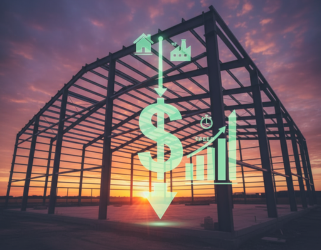
Why Pre-Engineered Buildings Are the Ultimate Cost-Saving Solution?
24 Sep 2025
Strong, Durable, and Long-Lasting: The Structural Superiority of PEBs
23 Sep 2025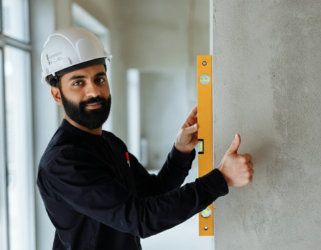
Quality Control in Civil Construction: Metrosh Infra’s Standards and Practices
22 Sep 2025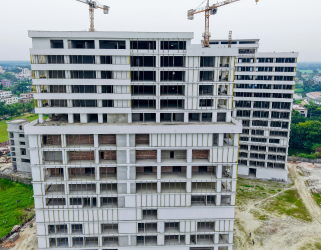
Cost-Efficiency in Hybrid Construction: Balancing Budget and Quality
22 Sep 2025
Building the Future: Metrosh Infra’s Approach to Turnkey Civil Construction
20 Sep 2025